Recent Posts
Differences in fire damage restoration for homes versus commercial properties
4/19/2024 (Permalink)
Fire damage is a distressing event, and whether it strikes a home or a commercial property, the aftermath can be overwhelming. At SERVPRO®, we understand the unique challenges posed by fire damage, and in this blog post, we'll delve into the critical differences in the restoration process for homes versus commercial properties.
Scale Matters
The primary distinction between home and commercial fire damage restoration lies in the scale of the incident. Commercial properties are often larger and more complex, with multiple floors and intricate layouts. This requires a meticulous approach to assess and address the damage comprehensively.
For homes, the focus tends to be on specific areas like bedrooms, kitchens, and living spaces. In both cases, a swift response is essential, but the scope of the restoration project significantly influences the strategies employed.
Business Interruption vs. Personal Disruption
Commercial fire damage not only impacts the property itself but also disrupts business operations. Time is of the essence in restoring commercial spaces to minimize downtime and financial losses. Our team at SERVPRO is well-versed in working efficiently to restore normalcy to businesses.
Conversely, home fire damage, while emotionally distressing, usually doesn't have the same immediate financial implications. The focus here is on personal belongings and creating a safe environment for the homeowners.
Code Compliance Challenges
Commercial properties must adhere to strict building codes and regulations. During the restoration process, our team pays meticulous attention to ensuring that all repairs and renovations comply with these codes. This may involve working closely with local authorities to secure necessary permits and approvals.
While homes also have building codes to consider, the regulatory landscape is often less complex. Our SERVPRO experts ensure that all restoration work aligns with local building requirements for both homes and commercial properties.
Specialized Equipment and Expertise
Commercial properties often house specialized equipment and materials that require a unique approach to restoration. Our SERVPRO technicians are trained to handle these intricacies, whether it's a manufacturing facility or a retail space.
Residential properties, on the other hand, may involve more personal items with sentimental value. Our team employs a compassionate approach to salvaging and restoring these belongings, recognizing their irreplaceable importance to homeowners.
At SERVPRO, we comprehend that fire damage, be it at home or in a commercial setting, is a traumatic experience. Our seasoned professionals are equipped with the knowledge and expertise to navigate the unique challenges posed by each scenario. By understanding the differences in restoration needs for homes versus commercial properties, we ensure a tailored approach that facilitates a smooth and efficient recovery process. When the flames subside, SERVPRO stands ready to restore both homes and businesses back to pre-fire conditions.
Mold in Rental Properties: Tenant and Landlord Responsibilities
3/13/2024 (Permalink)
As a trusted provider of restoration and cleaning services, we understand that mold can be a pesky issue in rental properties. Today, we're diving into the responsibilities of both tenants and landlords when it comes to mold in rental spaces. Let's get into the nitty-gritty and help you navigate this common challenge.
Identifying Mold
First things first – mold is not a welcome houseguest. It thrives in damp and humid environments, making rental properties susceptible to its growth. As a tenant, keep an eye out for any signs of mold, such as musty odors, discolored patches on walls or ceilings, and signs even water damage.
Tenant Responsibilities
Tenants play a crucial role in preventing and addressing mold issues. Regularly inspect your living space for leaks and moisture, promptly reporting any concerns to your landlord. Keep the property well-ventilated to reduce humidity, and if you spot any mold, refrain from trying to tackle it yourself – report it immediately.
Landlord Responsibilities
Landlords, this one's for you! Ensuring your rental property is mold-free is not only beneficial for your tenants' well-being but also safeguards the structural integrity of your investment. Conduct routine inspections to identify and address any potential sources of moisture. Promptly respond to tenant reports of mold, and hire professionals like SERVPRO® to conduct thorough mold remediation if needed.
Communication is Key
Open communication between tenants and landlords is vital in managing mold concerns. Tenants, don't hesitate to notify your landlord at the first sign of mold, and landlords, be proactive in addressing these reports promptly. Together, you can create a living environment that's mold neutral.
Prevention Tips
Prevention is the best cure, right? Encourage tenants to use exhaust fans, address leaks immediately, and maintain proper ventilation. Landlords, consider investing in dehumidifiers for properties in humid climates, and educate your tenants about mold prevention best practices.
Mold in rental properties is a shared responsibility, and effective communication is key to resolving the issue. By staying vigilant, promptly addressing concerns, and taking preventive measures, tenants and landlords can create an ideal living environment for everyone. If mold becomes a persistent problem, don't hesitate to reach out to SERVPRO for professional assistance. We're here to help you keep your rental property mold-free and thriving!
Repair or Replace? How to Assess Water-Damaged Items
2/22/2024 (Permalink)
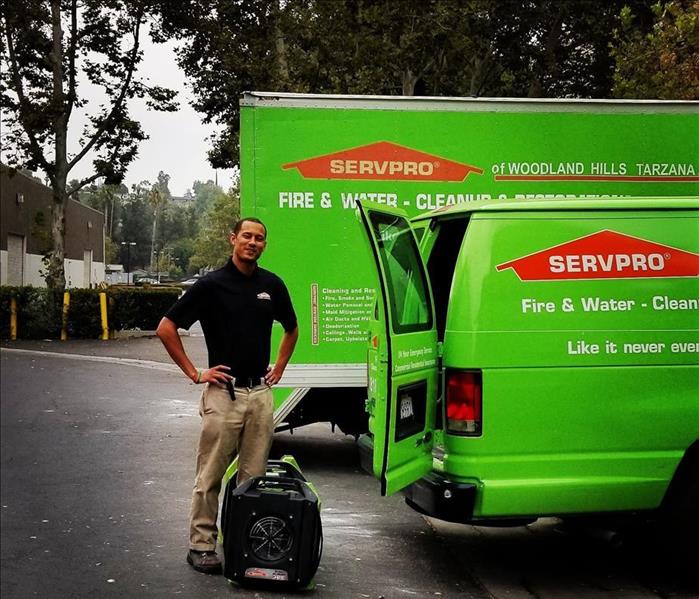 Restoration experts, such as our SERVPRO® team, can provide valuable insights and guidance on the best course of action.
Restoration experts, such as our SERVPRO® team, can provide valuable insights and guidance on the best course of action.
Water damage can wreak havoc on belongings, leaving homeowners faced with the dilemma of whether to repair or replace affected items. As seasoned professionals in the restoration industry, we often encounter numerous scenarios involving water-damaged items and understand the considerations in deciding between repair and replacement. Let's explore what can be salvaged after water damage and when it's best to opt for replacement.
1. Quick Assessment
Upon encountering water-damaged items, it's essential to conduct a quick assessment of the damage. Items vary in material, resilience, and susceptibility to water. Evaluate the extent of the damage, considering factors like the item's material, sentimental value, and the severity of water exposure.
2. Factors Influencing Salvageability
Some materials, like solid wood or certain metals, can withstand water damage better than others. Porous materials such as fabric, upholstery, or particleboard may be more challenging to salvage. The duration and level of exposure to water also play a crucial role. Items submerged in water for an extended period are more likely to suffer irreparable damage. Clean water from a pipe leak might pose fewer risks compared to contaminated water from floods or sewage backups. Contaminated water most often renders items unsalvageable due to potential health hazards.
3. Salvaging Strategies
- Professional Restoration Services: Consider consulting restoration professionals, such as SERVPRO of Woodland Hills, for items of high value or sentimental significance. Our team has the expertise and highly advanced equipment to repair water-damaged items effectively.
- Thorough Drying and Cleaning: For less severe damage, thorough drying and cleaning might salvage certain items. Use fans, dehumidifiers, and gentle cleaning solutions to remove moisture and dirt.
- DIY Repair: Some items, like wooden furniture or non-electrical appliances, might be salvageable through DIY efforts. Quick action and proper drying techniques are crucial.
4. When Replacement is the Best Option
- Severe Damage: Items extensively damaged or warped beyond repair, such as swollen particleboard furniture or irreparably warped electronics, might warrant replacement.
- Risks Involved: Items exposed to contaminated water or those prone to mold growth may pose a variety of risks, making replacement a safer choice.
- Cost Consideration: Sometimes, the cost of restoration exceeds the item's value or replacement cost. In such cases, opting for replacement might be cheaper and more practical.
5. Professional Opinion
When uncertain about the salvageability of valuable or irreplaceable items, seek professional opinions. Restoration experts, such as our SERVPRO® team, can provide valuable insights and guidance on the best course of action.
In conclusion, the decision to repair or replace water-damaged items depends on several factors. A quick assessment, considering material type, the extent of damage, and potential risks involved is highly important. While some items can be salvaged through professional restoration or DIY efforts, others may require replacement for safety, cost, or irreparable damage. Prioritize safety, especially when dealing with potentially contaminated items, and seek expert advice when in doubt about salvaging water-damaged belongings.
Storm Preparedness Tips to Protect Your Property
1/15/2024 (Permalink)
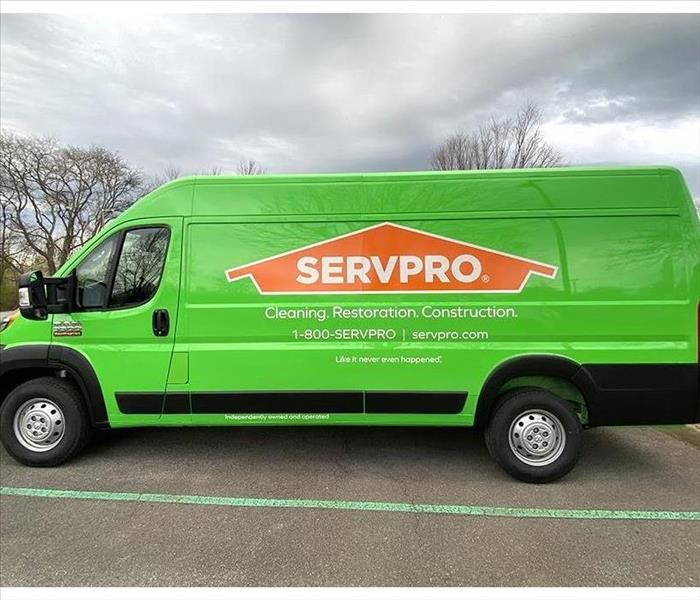 Stay safe, stay informed, and take proactive steps to prepare for storms!
Stay safe, stay informed, and take proactive steps to prepare for storms!
Storms can strike unexpectedly, causing significant damage to properties and disrupting daily life. Being prepared beforehand is key to minimizing risks and protecting your home or business. In this blog, we'll discuss crucial tips and steps to help you prepare effectively for impending storms.
Understanding the Need for Storm Preparedness
- Potential Risks: Storms bring various hazards such as high winds, heavy rainfall, lightning, and flooding. Understanding these risks is essential for proactive preparation.
- Property Protection: Preparing in advance can help protect your property from damage, reduce risks to occupants, and streamline recovery efforts post-storm.
Essential Tips for Storm Preparedness
Create a Plan
Develop a comprehensive storm preparedness plan for your household or business. Include evacuation routes, emergency contacts, and essential supplies.
Emergency Kit
Assemble an emergency kit containing basic necessities like water, non-perishable food, first aid supplies, flashlights, batteries, and important documents. Ensure it's easily accessible.
Secure Your Property
Trim trees and shrubs, secure loose outdoor items, and reinforce windows and doors to minimize potential damage from high winds.
Backup Power and Utilities
Consider installing a backup generator to ensure power supply during outages. Shut off utilities if advised by authorities to prevent potential hazards.
Insurance Review
Review your insurance policy to ensure adequate coverage for storm-related damages. Understand what is covered and document your property for insurance claims.
Stay Informed
Monitor weather forecasts and warnings regularly. Sign up for emergency alerts and stay informed about evacuation orders or shelter locations.
Communication Plan
Establish a communication plan with family members, neighbors, and employees. Designate a meeting point in case of separation during evacuation.
Protect Valuables
Protect important documents, valuables, and sentimental items by storing them in waterproof containers or by making digital backups.
Storm preparedness is a crucial aspect of mitigating risks and ensuring the safety of your property and loved ones. By following these essential tips for storm preparedness, you can significantly reduce potential damage and streamline the recovery process. Remember, being prepared can make all the difference when facing the uncertainty of severe weather conditions.
Stay safe, stay informed, and take proactive steps to prepare for storms!
Why Annual Fire Safety Inspections in Commercial Buildings are Important
12/7/2023 (Permalink)
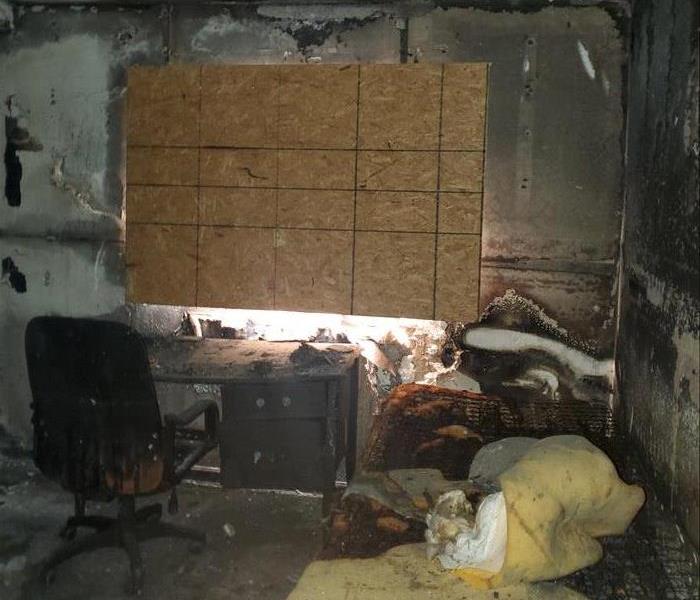 Annual fire safety inspections in commercial buildings are crucial!
Annual fire safety inspections in commercial buildings are crucial!
Commercial buildings are bustling hubs of activity, housing businesses, employees, and valuable assets. With so much at stake, it is crucial to prioritize the safety and well-being of everyone within these spaces. One essential aspect of maintaining a safe environment is conducting annual fire safety inspections. In this blog, we will explore the significance of these inspections and how they play a vital role in mitigating potential fire hazards.
Compliance with Fire Codes and Regulations
Commercial buildings must adhere to specific fire codes and regulations set forth by local authorities. Annual fire safety inspections ensure that the building is up to code and compliant with all necessary safety measures. This not only demonstrates a commitment to the well-being of occupants but also helps avoid legal implications and penalties.
Early Detection of Fire Hazards
Fire safety inspections involve a thorough examination of the entire premises, including electrical systems, fire extinguishers, alarms, emergency exits, and more. Trained professionals can identify potential fire hazards such as faulty wiring, overloaded circuits, blocked escape routes, or malfunctioning fire suppression systems. By detecting these risks early on, necessary preventive measures can be taken to minimize the chances of a fire outbreak.
Maintenance and Upkeep of Fire Safety Equipment
Commercial buildings are equipped with various fire safety equipment, including fire extinguishers, sprinkler systems, alarm systems, and emergency lighting. Regular inspections ensure that these devices are fully functional, properly maintained, and in compliance with safety standards. Any issues discovered during inspections can be promptly addressed, guaranteeing that these lifesaving tools are ready to act in an emergency.
Employee and Occupant Safety
The well-being of employees, occupants, and visitors is of utmost importance in any commercial building. Annual fire safety inspections give individuals peace of mind, knowing that their workplace is actively taking steps to protect them. By identifying and addressing potential fire hazards, these inspections significantly reduce the risk of accidents, injuries, or even fatalities in the event of a fire.
Prevention and Risk Mitigation
Fire safety inspections go beyond mere compliance - they foster a proactive approach to fire prevention. By regularly assessing and addressing potential risks, building owners and facility managers can significantly reduce the likelihood of fire incidents. This not only protects lives and property but also helps maintain the continuity of business operations by minimizing the potential for disruption caused by fire-related emergencies.
Annual fire safety inspections in commercial buildings are crucial to ensure the well-being of employees, occupants, and assets. By complying with fire codes and regulations, detecting and addressing fire hazards, maintaining fire safety equipment, and fostering a culture of prevention, these inspections play a pivotal role in protecting lives and property.
Storm Damage Insurance Claims: What You Need to Know
11/14/2023 (Permalink)
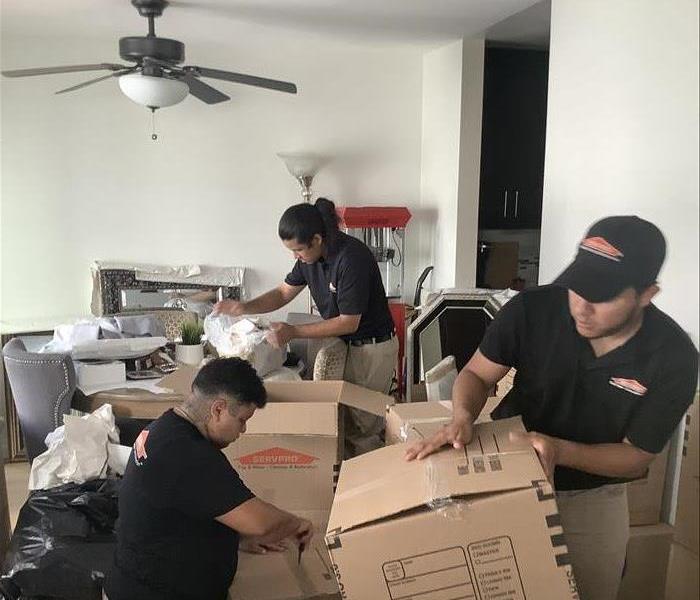 Our team of experts is ready to assist you in getting your property back to its pre-storm condition.
Our team of experts is ready to assist you in getting your property back to its pre-storm condition.
When a storm wreaks havoc on your home or business, the last thing you want is to be overwhelmed by the complexities of an insurance claim. Understanding the process and knowing what to do can make a significant difference in how smoothly and successfully your storm damage claim is resolved. In this blog, we will walk you through the key aspects of storm damage insurance claims, providing you with valuable insights and tips to navigate the process effectively.
1. Document the Damage
The first step in any storm damage insurance claim is to thoroughly document the damage. This documentation is crucial for substantiating your claim. Here's what you need to do:
Take Clear Photos and Videos: Capture the extent of the damage from multiple angles, ensuring that you cover all affected areas. These visual records will serve as essential evidence during the claims process.
Create an Inventory: List all damaged items, including their value, purchase date, and any relevant receipts. This will help in assessing the extent of your loss.
2. Contact Your Insurance Company
Notify your insurance company as soon as possible after the storm. Be prepared to provide them with the following information:
Policy Information: Have your policy number and details ready.
Claim Details: Explain the type and extent of damage and the date it occurred.
Contact Information: Ensure your contact information is up to date so that the insurer can reach you promptly.
3. Understand Your Policy
It's crucial to understand the specifics of your insurance policy. Not all policies cover the same types of storm damage. Here are some things to consider:
Coverage Limits: Know the limits and deductibles on your policy.
Exclusions: Understand what your policy does not cover.
Additional Coverages: Some policies offer optional endorsements for specific perils, such as flood or sewer backup coverage.
4. Mitigate Further Damage
Insurance companies may require you to take reasonable steps to prevent further damage to your property. Failure to do so might affect your claim. Be sure to:
5. Work with the Adjuster
An insurance adjuster will assess the damage, so be prepared for their visit. Here's what you can do:
Provide Evidence: Show the adjuster your photos, videos, and documentation.
Be Present: Be available to answer questions and provide access to all damaged areas.
Get a Detailed Report: Ensure that the adjuster provides a detailed report of the damage and their assessment.
6. Keep Records
Throughout the claims process, keep a record of all communications with your insurance company. This includes emails, letters, and phone call details. Having a paper trail can be beneficial if any disputes arise.
7. Seek Professional Assistance
If the process becomes complex or disputes arise, consider seeking legal or professional help. Public adjusters or attorneys can assist you in negotiations and ensure that your rights are protected.
Navigating a storm damage insurance claim can be challenging, but with the right knowledge and preparedness, you can ensure a smoother process. Document the damage, understand your policy, and maintain open communication with your insurance company and adjuster. Should you need assistance along the way, don't hesitate to seek professional help. Remember, we're here to help you during this stressful time.
For professional storm damage restoration and assistance with your insurance claim, contact SERVPRO® of Woodlands Hills. Our team of experts is ready to assist you in getting your property back to its pre-storm condition.
How Bad is Your Water Damage?
10/2/2023 (Permalink)
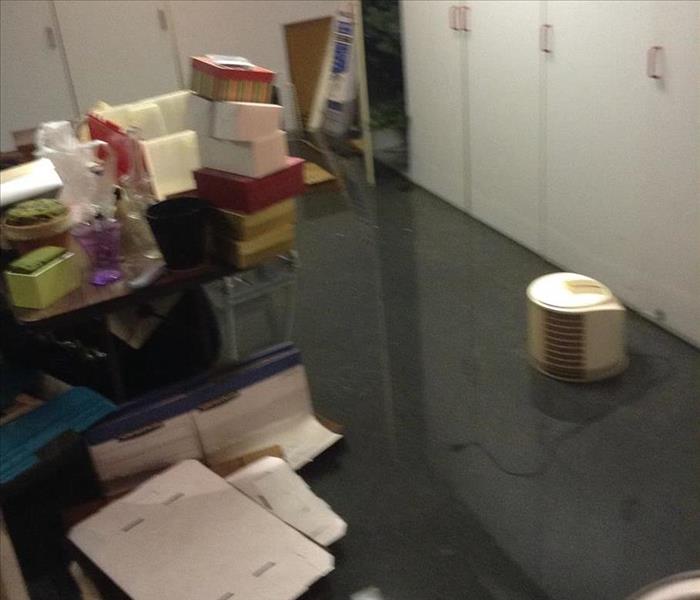 A Basement Flooded with Water
A Basement Flooded with Water
Water damage can be devastating to your property and your health. Mold can start growing within 24-48 hours of water damage, so it's important to act quickly. SERVPRO is here to help 24/7/365.
We specialize in water damage restoration and emergency water extraction. We have the professional water removal equipment and drying equipment to get the job done as quickly as possible. We live by our slogan, "Like it never even happened."
There are three categories of water damage:
- Category 1: Clean water
- Category 2: Gray water
- Category 3: Black water
Category 1 water is the least contaminated and can be caused by a broken clean water line. Category 2 water is moderately contaminated and can be caused by a leaky dishwasher or washing machine. Category 3 water is the most contaminated and can be caused by a sewage backup or flood water.
Even if your water damage starts out as Category 1, it can quickly become Category 2 or 3 if it is not cleaned up quickly. Dirty carpet or soil can also contaminate your water damage.
The longer water stands on your property, the worse the contamination will become. This means that SERVPRO will need to use more aggressive measures to clean your structure and property. In some cases, soft furnishings, such as carpet, padding, or furniture, may need to be discarded for your safety.
Water damage can be expensive, but it's important to remember that preventing mold growth is even more expensive. If you have water damage, call SERVPRO immediately at 818-882-4556. We will help you get your property dry and safe as quickly as possible.
How Fast Water Damage Occurs
8/15/2023 (Permalink)
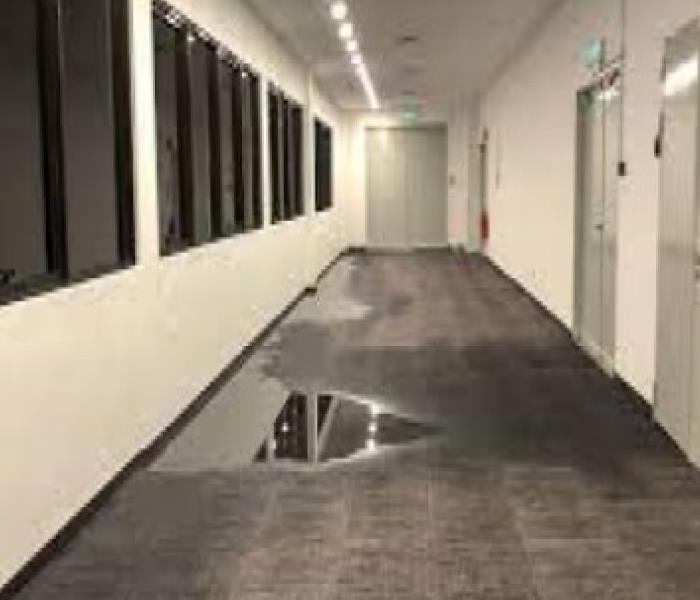 Water Damage In Building
Water Damage In Building
When water damage strikes, it spreads quickly and can cause extensive damage to your property. Within minutes, water can absorb into walls, floors, and furniture, causing finishes to bleed and flooring to swell. Over the next few hours, drywall will swell and break down, metal will tarnish, and furniture will crack and split. Dyes and inks from fabrics and paper will bleed and stain, and a musty odor will fill the air.
If you experience water damage, it is important to act quickly to mitigate the damage. The longer you wait, the more extensive the damage will become. Call a SERVPRO immediately to get your property back to normal as soon as possible.
Contents You Should Keep Or Discard After A Fire
8/3/2023 (Permalink)
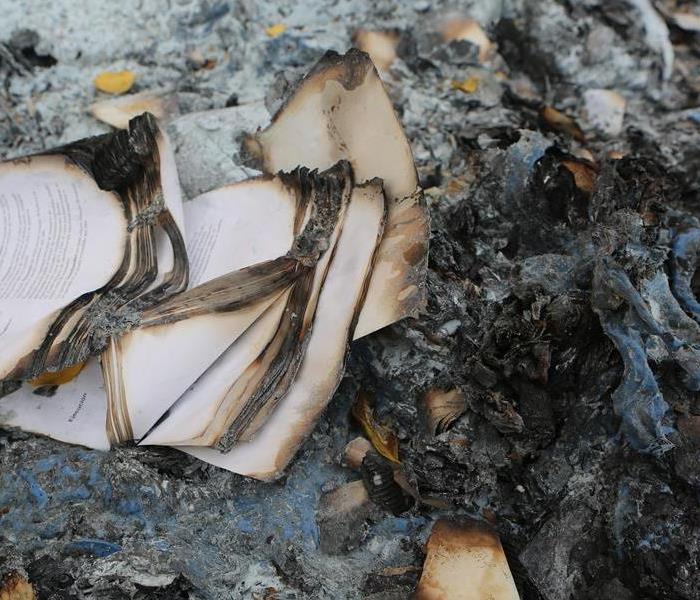 Contents That May Need to be Disposed of After a Fire.
Contents That May Need to be Disposed of After a Fire.
After a fire, it is important to carefully consider what belongings to keep and what to dispose of.
Some materials, such as plastics, nonorganic fibers, and wiring, release harmful chemicals when exposed to high temperatures. These chemicals can be dangerous if ingested or absorbed through the skin.
It is important to dispose of any items that you plan on putting in or onto your body. This includes food, medicine, makeup, and toiletries. You should also get rid of most items in plastic containers, as these can also release harmful chemicals.
When dealing with fire damage, it is always better to be safe than sorry. If you are unsure about whether or not an item is safe to keep, it is best to dispose of it.
Hiring a professional fire remediation company, such as SERVPRO of Woodland Hills, can help you make these decisions. They have the experience and expertise to assess the damage and help you determine what items can be saved and what needs to be disposed of.
Here are some additional tips for disposing of fire-damaged items:
- Do not throw fire-damaged items in your regular trash. This could contaminate the waste stream and pose a risk to public health.
- If you are unsure about how to dispose of an item, it is always best to err on the side of caution and dispose of it properly.
SERVPRO: A Green Company
6/2/2023 (Permalink)
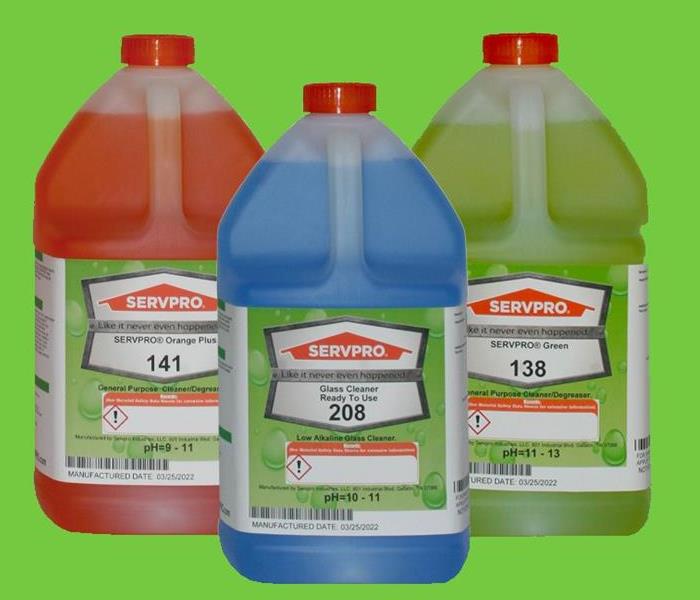 SERVPRO is here for all of your restoration needs. Call us now for an inspection (818)882-4556!
SERVPRO is here for all of your restoration needs. Call us now for an inspection (818)882-4556!
SERVPRO is committed to being a green company. We believe that we have a responsibility to protect the environment and to help our customers reduce their environmental impact.
We use environmentally friendly products and practices in all of our services. For example, we use biodegradable cleaning products, recycled materials, and energy-efficient equipment.
We are also committed to educating our customers about environmental sustainability. We offer tips on how to reduce their environmental impact.
Here are some of the ways that SERVPRO is environmentally friendly:
- We use environmentally friendly cleaning products. These products are biodegradable and non-toxic, so they are safe for people and the environment.
- We recycle all of our waste materials. This includes paper, plastic, metal, and cardboard. We also recycle electronics and batteries.
- If you are looking for a green company to help you with your disaster restoration needs, then SERVPRO is the right choice for you. We are committed to using environmentally friendly products and practices, and we are always looking for ways to reduce our environmental impact.






 24/7 Emergency Service
24/7 Emergency Service





